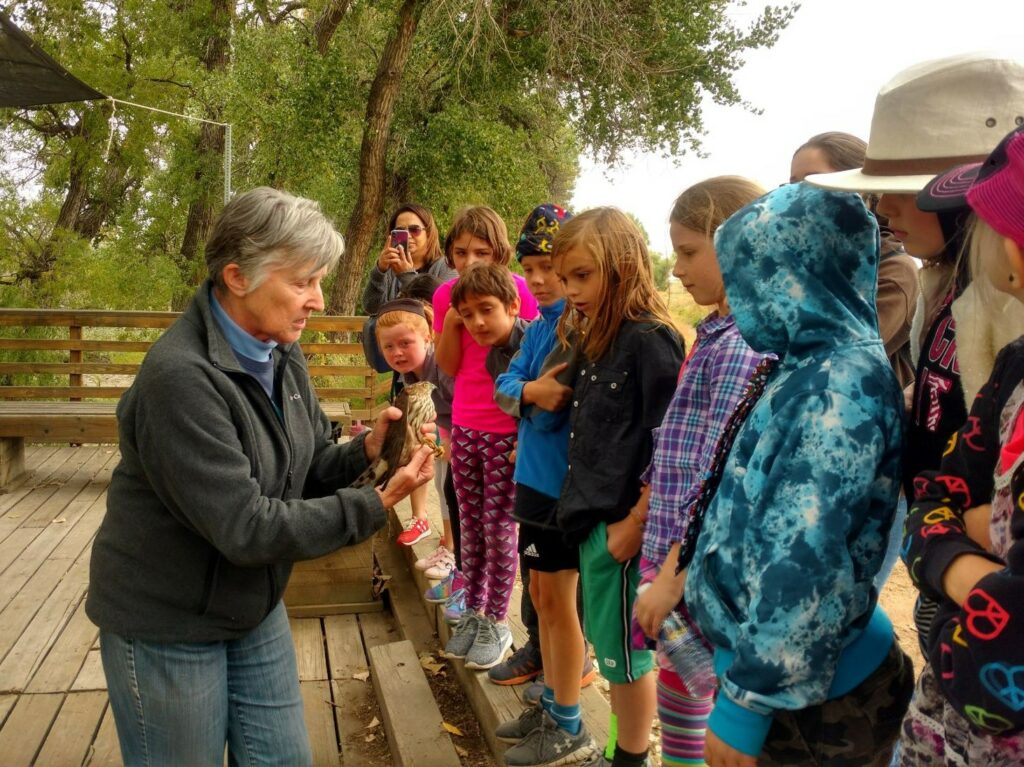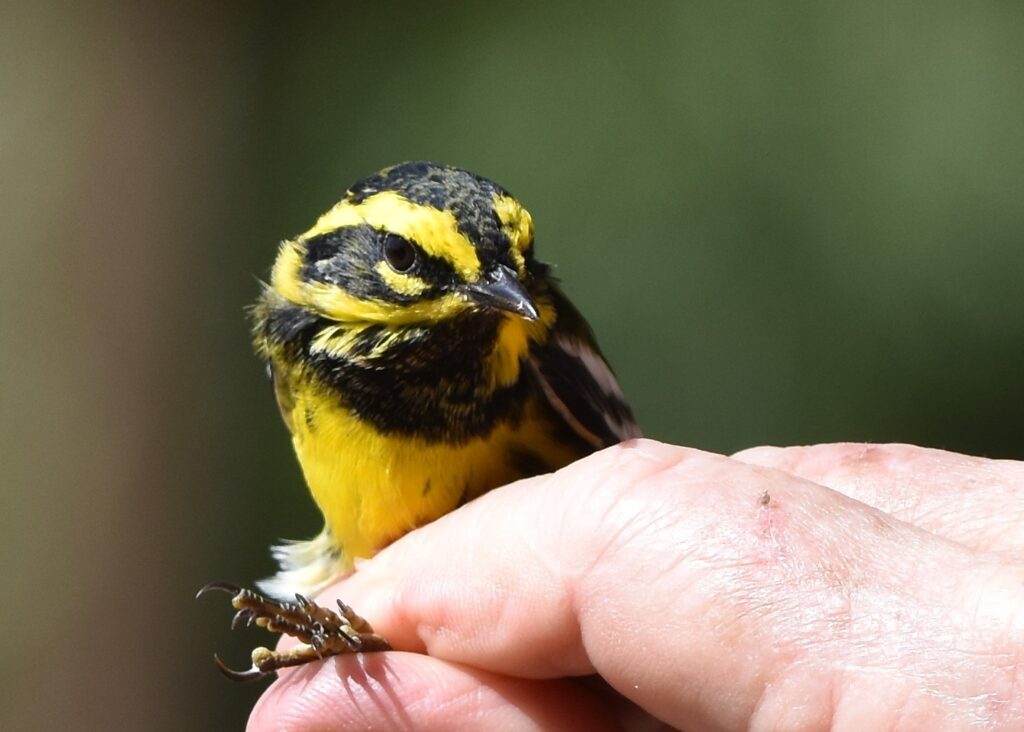
There’s a seasonal activity underway that biologists and birders want you to know about. “Bird banding” takes place across North America in the fall and spring every year, so that scientists can understand the productivity and health of migratory bird populations. Some set up public bird banding stations to share what they’re learning, in real-time, with the rest of us.
Their not-so-secret motive: to help us better appreciate birds and protect them for future generations.
Scientists set up stations in habitats popular with migratory birds—places where food, water, and resting spots are plentiful. In the Denver metro area, that’s Barr Lake State Park, northeast of Brighton. And you can sign up to visit through October 23 (find out how at the end of this story).
Banding entails first capturing birds in tall, bird-friendly nets set up along pathways within a habitat. Nets are checked every 30 minutes; and captured birds are placed in cloth drawstring bags. Minutes later, bags are opened one-by-one at the outdoor station by a bird bander. At Barr Lake, this is Bird Conservancy of the Rockies’ bird bander, Meredith McBurney. McBurney works at a neatly organized table covered with tools, books, a plexiglass-enclosed scale, and a tackle box bursting with various size leg bands. She’s surrounded by staff and volunteers ready to assist with identification and data entry. She quickly measures the bird’s leg and fits it with a small metal leg-ring bearing a unique number. It’s weighed, identified, measured, and then released.
According to McBurney, “If we are to conserve birds, we must understand their full life cycle–their needs throughout the year. The majority of birds have more than one home during each year, and those homes can be separated by hundreds if not thousands of miles. For birds, getting from their breeding grounds to their winter home and back—the process we call migration—is a difficult journey. So, our biggest task as bird banders is to carefully identify and evaluate each bird we catch so that we continue to build a base of information that can be used to guide long term conservation efforts.”

When The Denver North Star visited in August, this reporter was able to briefly hold a tiny bright yellow Wilson’s Warbler (weighing less than two nickels!). The warbler was most likely making its way from Canada or Alaska down to Central America, relying on the abundant insect population at Barr Lake to refuel. Wilson’s Warblers are the most commonly caught species at the Barr Lake station, unless you’re looking at 2011, when for once in a 15-year period Chipping Sparrow numbers surpassed the Wilson’s.
The Barr Lake station bands an average 1,400 birds and reaches over 2,200 people in a typical season. 2021 is its 34th. McBurney, as natural in the outdoor classroom as she is with the station’s decades of data, shares that “each fall, hundreds of students, from kindergarten to college age, visit the Barr Lake banding station to learn about the challenges birds face during migration, how to identify birds using field marks, and the banding process. Students learn why it is important to collect scientific data and how it contributes to bird conservation.”
And McBurney hopes you will visit too. “There is something about birds that captures our hearts as well as our minds,” she says, “and we really enjoy sharing that experience with people of all ages.”
Bird Banding at Barr Lake State Park
Aug 24- Oct 23
Tues- Fri, 7:30-8:30a
Sat-Sun, 8-9a, 9-10a, and 10-11a
Registration is required for all timeslots
https://www.birdconservancy.org/what-we-do/education/bird-banding/

I always enjoy your stories – (loved the one about Bingo)
Great work.